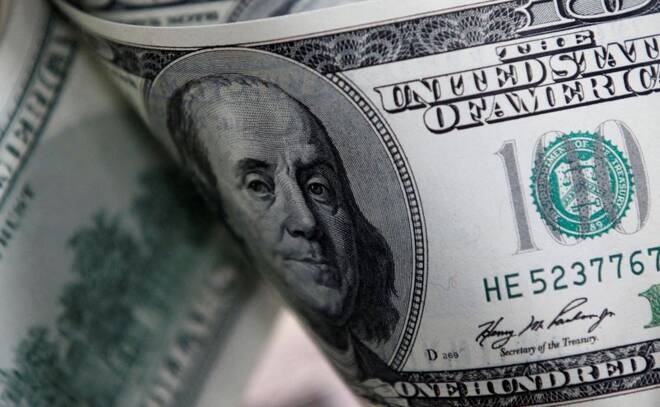Advertisement
Advertisement
Dollar rises as hot U.S. inflation data seen keeping Fed hawkish
By:
By Alun John HONG KONG (Reuters) - The dollar was at a two-week high on the euro on Friday, ahead of inflation data that should guide the Federal Reserve's policy tightening path, and after the European Central Bank said it would start its rate-hike campaign next month.
By Saqib Iqbal Ahmed
NEW YORK (Reuters) -The dollar climbed to a near four-week high against a basket of currencies on Friday, after data showed U.S. consumer prices accelerated in May, strengthening expectations the Federal Reserve may have to continue with interest rate hikes through September to combat inflation.
In the 12 months through May, the CPI increased 8.6% after rising 8.3% in April. Economists had hoped that the annual CPI rate peaked in April.
The inflation report was published ahead of an anticipated second 50 basis points rate hike from the Fed next Wednesday. The U.S. central bank is expected to raise its policy interest rate by an additional half a percentage point in July. It has hiked the overnight rate by 75 basis points since March.
“Inflation is now at a 40-year high with little evidence that it has peaked,” said John Doyle, vice president of dealing and trading at Monex USA.
“Stocks are extending losses on the expectation the Fed could find the scope to speed up rate hikes. The greenback is gaining on policy divergence and risk-off trading,” Doyle said.
The U.S. Dollar Currency Index, which tracks the greenback against six other major currencies, was 0.8% higher at 104.16, its highest since May 17, and within sight of 105.01, the two-decade high touched in mid-May.
For the week, the index was up nearly 2%, its best weekly performance in 6 weeks.
The dollar was up 0.79% against the Swiss franc at 0.9881 francs after the U.S. Treasury Department on Friday said Switzerland continued to exceed its thresholds for possible currency manipulation under a 2015 U.S. trade law, but refrained from branding it a currency manipulator.
With the U.S. inflation data knocking investors’ risk appetite, the risk-sensitive Australian dollar reversed direction to trade down 0.58% on the day.
Sterling fell 1.5% to $1.2315 and was set for a second consecutive week of declines as Britain’s gloomy economic outlook left investors on edge.
In cryptocurrencies, bitcoin slipped 3.7% to $28,984.33, as the world’s largest digital currency by market value continued to struggle to overcome a bout of selling pressure that has taken it below the $30,000 level in recent sessions.
(Reporting by Saqib Iqbal Ahmed; editing by David Evans and Chizu Nomiyama)
About the Author
Reuterscontributor
Reuters, the news and media division of Thomson Reuters, is the world’s largest international multimedia news provider reaching more than one billion people every day. Reuters provides trusted business, financial, national, and international news to professionals via Thomson Reuters desktops, the world's media organizations, and directly to consumers at Reuters.com and via Reuters TV. Learn more about Thomson Reuters products:
Advertisement
